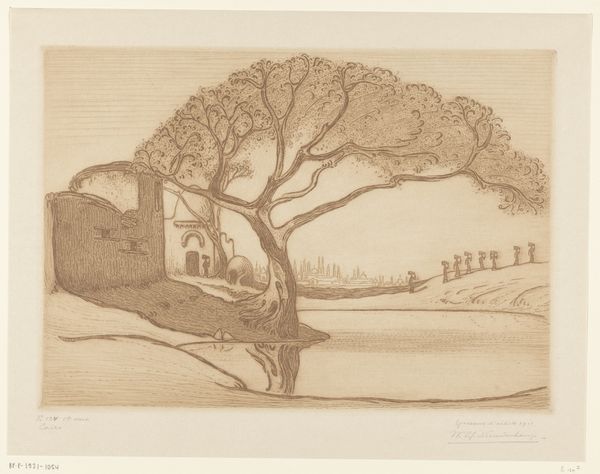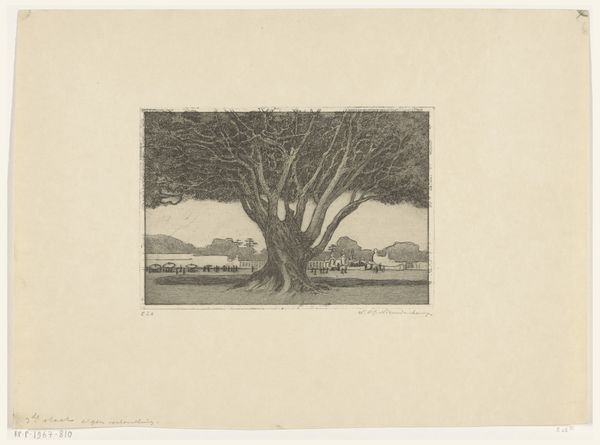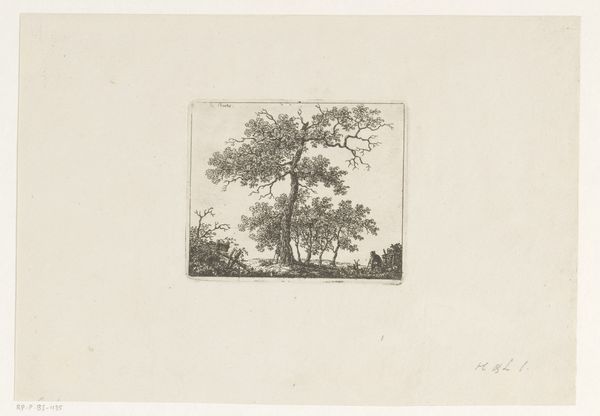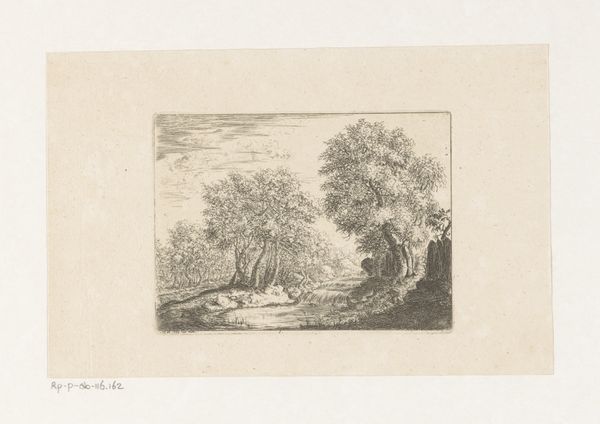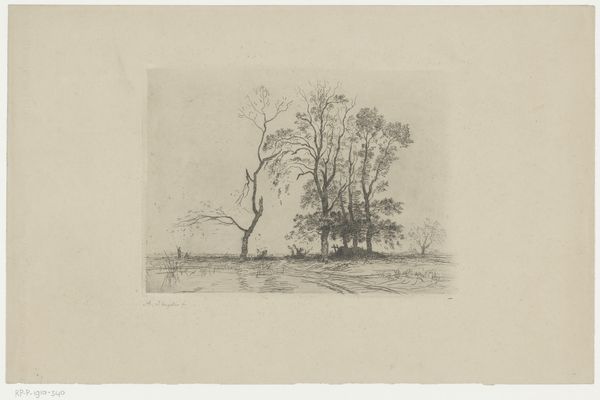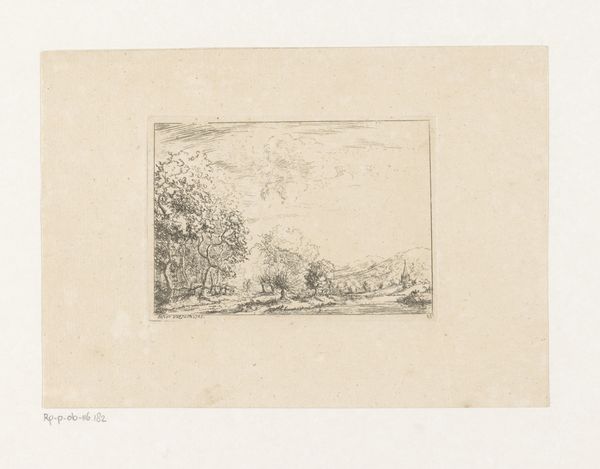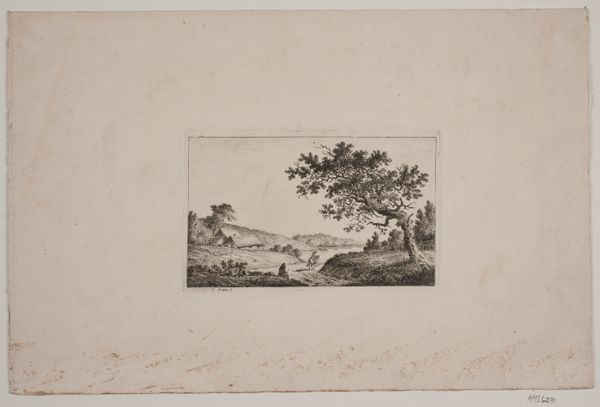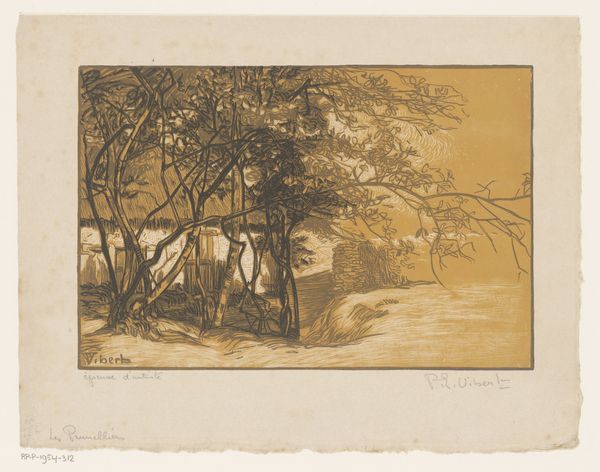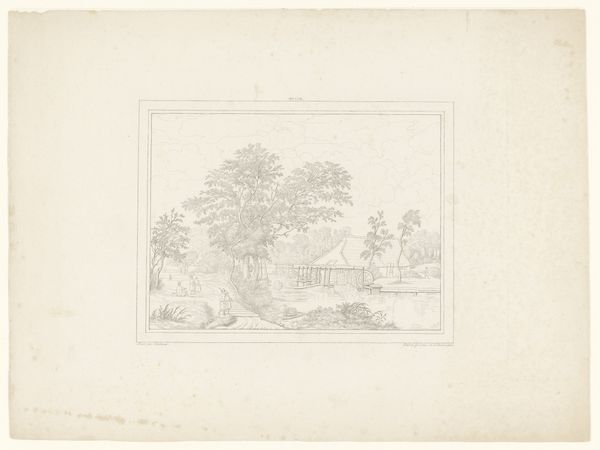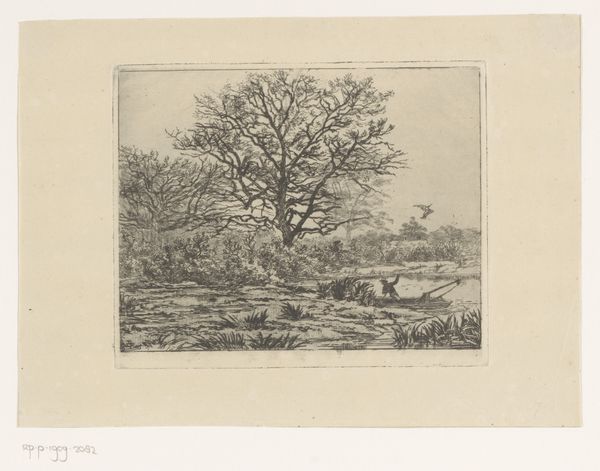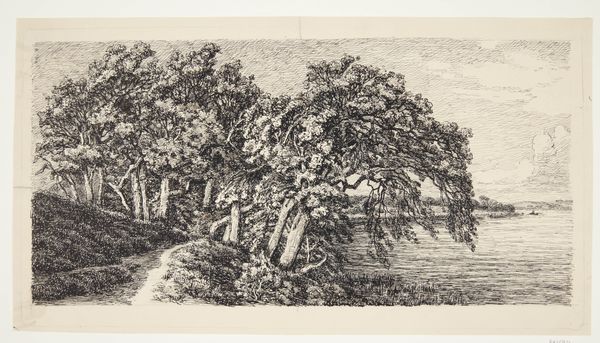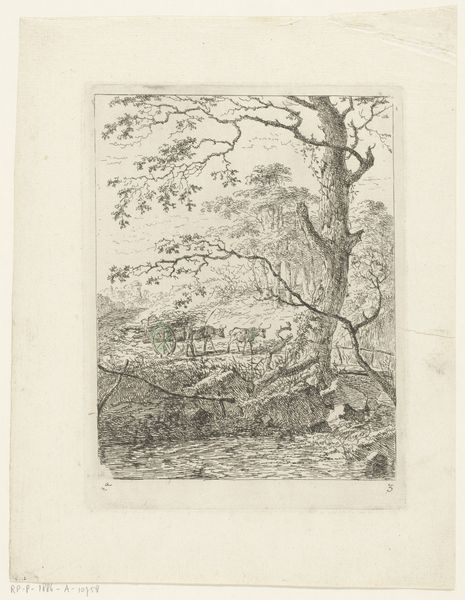
Huizen, boom bij vijver en vrouwen met waterkruiken op het hoofd 1911
0:00
0:00
drawing, print, etching
#
drawing
#
art-nouveau
# print
#
etching
#
landscape
#
etching
#
geometric
Dimensions: height 401 mm, width 493 mm
Copyright: Rijks Museum: Open Domain
Curator: This etching by Wijnand Otto Jan Nieuwenkamp, created around 1911, is titled "Houses, Tree by Pond and Women with Water Jugs on Their Heads". Editor: It feels very dreamlike. The tones are muted and there is this almost fantastical balance between stillness and activity that catches your attention. Curator: Indeed, the composition guides your eye carefully. We see a village cluster situated at the banks of the water, complete with a partially destroyed tower. Observe the imposing tree dominating the landscape and the column of women with their jugs moving through the scene; both of these lead directly towards an ethereal horizon. Editor: There's a clear emphasis on form and structure with the use of those geometric designs within nature. What's most striking is the contrast between the decay within the tower structure, to the symmetry, but almost fragile tree on the opposite side of the composition. What purpose does this contrast serve in terms of subject? Curator: The piece was made during the period of Indonesian occupation and the women depicted appear to be moving towards some sort of shelter. It may offer a depiction of women during that period who have to do so much, for so many while finding shelter in such landscapes as presented. But what exactly about Nieuwenkamp's visual language helps portray it so? Editor: To start, there is an understanding of light. The shading around the trees contrasts the openness that engulfs those figures by the horizon. There is a very deliberate decision of how light engulfs a subject depending on the need, be it security, but at a very bare minimum. But to be fair, it’s the geometric harmony that gives it such a poignant weight; especially through etching and tonality. Curator: You're absolutely correct. It’s precisely these formal elements that carry its enduring impact. The spatial depth—foreground elements versus those figures at the back that provide social, historical depth. The lack of precise tone helps define its mood that could apply to even similar conditions that mirror today. Editor: This piece is an amazing combination of history and aesthetic consideration of composition and tone. Curator: A perfect bridge of understanding social commentary through visual rhetoric.
Comments
No comments
Be the first to comment and join the conversation on the ultimate creative platform.
